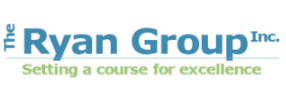The Progression of Competence
The approach
The approach to competency modeling is to articulate the process across multiple perspectives, including core competencies, leadership competencies, manager competencies, global enterprise competencies, and functional department competencies. This approach provides your organization a multi-dimensional view that goes beyond traditional skills and abilities and allows you to see results as actionable knowledge and insight for managing and growing your business.
The case for competency
Competing successfully in the rapidly changing and complex global environment requires that all resources provide maximum effectiveness and efficiency. Successful organizations will be those whose employees provide optimal, cost-effective service to customers through aligned competencies that promote excellent performance and continuous improvement.
The case for assessment
By aligning competencies to corporate strategic business objectives, everyone in the organization drives toward achieving the goals of the business. Applying a systemic approach integrates development mapped to the competencies to create consistency across all human performance areas, thus enabling the organization to achieve higher return on the time and money invested in its human capital.
The case for human performance
While many organizations recognize the importance of their people, few have committed to integrating competencies that are aligned with their strategic direction. Even fewer have committed to changing their culture to gain and sustain competitive advantage through human performance.
What is a competency?
A competency is defined as an area or areas of measurable personal capabilities that facilitate and enable one to be successful.
To be a successful organization, one must be effective
- In job performance.
- In delivering line of business (functional department) services.
- When engaging the marketplace and serving customers.
- In executing and accomplishing strategic intent.
Progression of competence
In response to this approach, the Ryan Group, Inc. has designed a portal platform with a comprehensive library of key assessments to help organizations achieve their goals in being successful in each of these four key performance behavior areas we call the progression of competence.
Job performance
Our approach to be a successful contributor we must do four things well.
Know Something – Knowledge, skills, and abilities
Do Something – Role responsibilities and work activities
Engage with People – Collaborate with others
Get Results – Set high standards of achievement orientation
Functional department effectiveness
The Functional Department Effectiveness assessments are designed to measure the current level of a functional department’s or business unit’s performance and project a trend line. Performance, within these assessments, is described, for the most part, as
- Delivering Services
- Leveraging Technology
- Optimizing Resources
- Improving Processes
Global competencies
Global competencies focus on the horizontal dimension of the organization. Meaning everyone needs to be competent at (examples):
- Contributing to Team Success
- Building Value-Based Relations
- and 50 others
The database of over 50 competency assessments are integrated into the Job Performance assessments according to their appropriate application. This provides for a consistency of application across the enterprise.
Strategic competencies
Strategic competencies focus on the vertical dimension of the organization. Meaning the focus is on sustaining the organization’s future (examples):
- Developing Effective Leaders
- Building High-Performing Managers
- and 20 others
The database of over 20 competency assessments allow the organization the means to ensure that future leaders are being developed around a core set of competencies important to the organization’s success.
Strategic intent
Strategic intent is defined as a compelling statement about where an organization is going that succinctly conveys a sense of what that organization wants to achieve in the long term. Strategic intent answers the question: “What exactly are we trying to accomplish?”
Strategic intent can provide a sense of direction, a particular point of view about the long-term market or competitive position the organization hopes to develop and occupy.
Strategic intent can provide a sense of discovery in that it holds out to the organization’s members the promise of fulfillment, accomplishment, and job satisfaction.
Strategic intent can provide a sense of destiny, a worthwhile goal around which energies can be focused across the organization.
